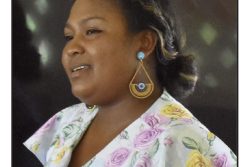This is the time of the year when giving is at its peak. Aside from the gifts exchanged among family and friends and those given to children, individuals and corporations lean towards giving back. The beneficiaries tend mostly to be the less fortunate, the elderly and children in difficult circumstances. At Christmas time there is great focus on children. Many who might never have had a birthday marked in any special way would more than likely have received a present in the days running up to and on Christmas Day.
Sadly, though, for too many others all around the world, even that was an impossibility. For yet another year, millions of children remain trapped in conflict zones, stateless as asylum seekers, or locked in detention centres in countries where they would have sought refuge. A poignant photograph of a sleeping Syrian child being carried – presumably into Jordan – in an old-fashioned, sans-wheels suitcase circulating on social media this year, may have first appeared in March on Twitter. Between then and now, hundreds of thousands more have left the places they were born, fleeing into near and distant lands, escaping conflict, poverty or disaster. Others are migrating in the hope of finding a better life.
A significant number of them are unaccompanied by an adult. The obvious assumption would be that they were separated from their parents in the tumult that is refugee travel, but in fact many are alone because their parents are unable to raise the sum of money needed to pay the smugglers to transport both themselves and their children. As a result, thousands of children mostly boys between the ages of 15 and 17 years old, arrive in countries in Europe where they often are unable to speak the language.
This year, thousands more than usual would have arrived at the USA/Mexico border as part of the so-called migrant caravan. While for the most part these travellers, mainly from countries in Central America, would have arrived with their parents, they were being separated from them and placed in detention. Horror stories of the poor treatment meted out to them abounded and to date, two Guatemalan children have died while in the custody of US border officials. The first was a 7-year-old girl named Jakelin Caal, who had a high fever and subsequently died of liver failure. The second was an 8-year-old boy, Felipe Alonzo-Gomez, who was also diagnosed with fever just before he died.
Far too many children encounter danger, detention, deprivation and discrimination. And while the stories of the trials children face trying to enter Europe or the USA receive global coverage, they are not the only places where this happens. Conflicts and economic hardship have triggered a massive increase in global migration and basically people are simply trying to leave a terrible place, though familiar, for a new one where they believe they will fare better.
Before now, Guyana would not have been seen as a country to which refugees fled. On the contrary, it was and still is a country whose citizens leave seeking a better life elsewhere. Yet, just last year there was an incident involving a group of Haitians, including several children, who were detained; some had been placed in police station lockups. It was only after several prominent citizens spoke up against the maltreatment of the Caricom citizens, in view of the fact that free movement in the Caribbean group exists, that moves were made to rectify it.
This year saw a larger influx of Venezuelans, reports said as many as 30 a day, again including children, fleeing hardship in that country and as was the norm, dozens were placed before the courts and subsequently fined and jailed for entering Guyana illegally. Once again, civil society stepped up, urging government to operate from a humanitarian standpoint when treating with Venezuelans.
It would appear, from the lack of empathy afforded displaced children that too many adults have forgotten what it was like to be a child; the fears that come with facing the unknown even when surrounded by the familiar. There seems to be no thought given to the fact that children fleeing conflicts and poverty would have already seen and lived through too much of what is simply awful and how rejection or being locked up and not understanding why, particularly those separated from their parents and for the language of the ‘safe place’ they are attempting to flee to presents a barrier, could harm them mentally and emotionally.
Children are children wherever they are. How, therefore, do governments get to decide which ones should be treated differently? Don’t all children have to right to education and medical care? Shouldn’t they all be kept safe from violence, abuse, exploitation or discrimination? The answers to these questions are easy. They form part of the Convention on the Rights of the Child, which is the most widely ratified human rights treaty. Governments that need to be reminded of this should hold their heads in shame.







